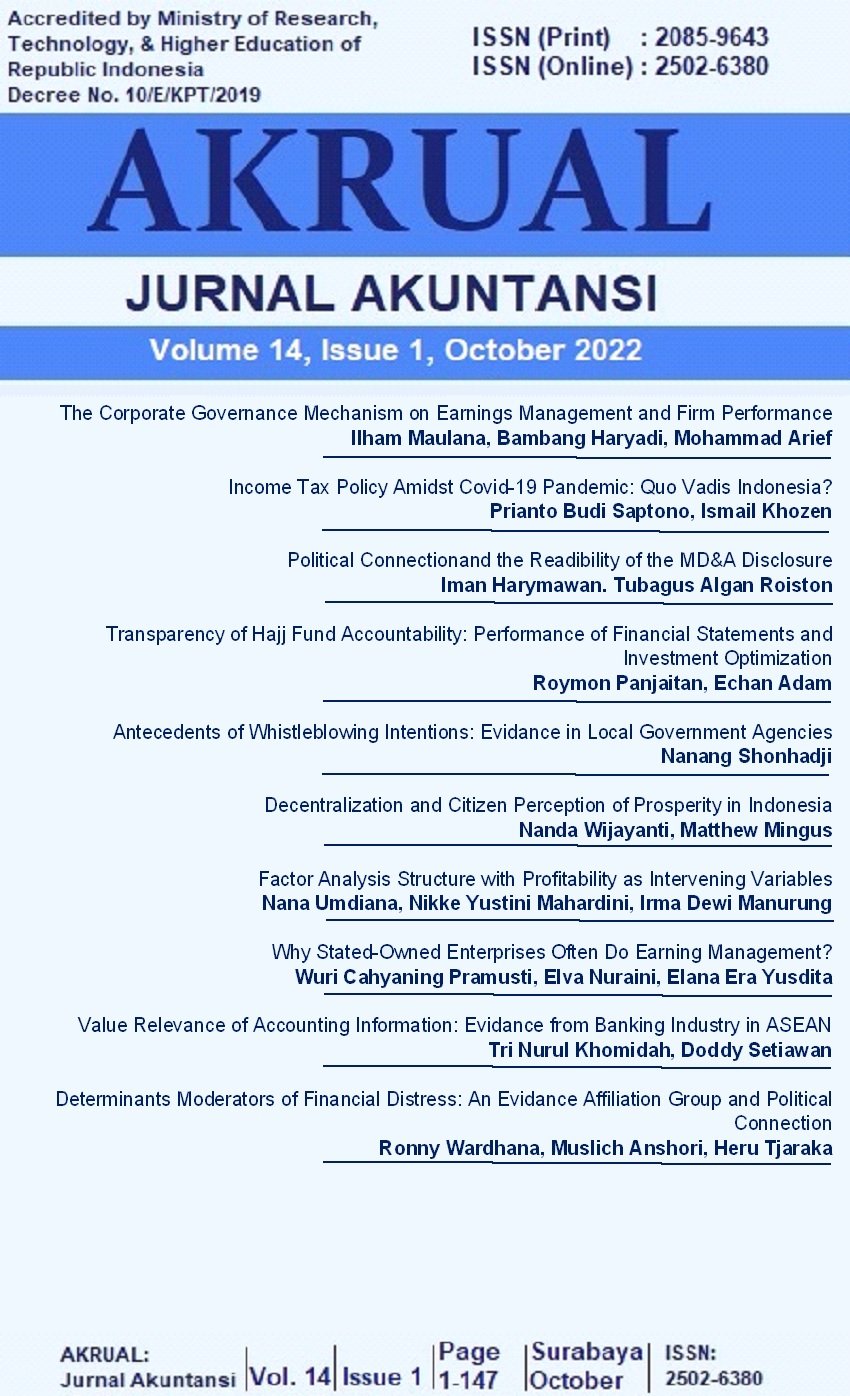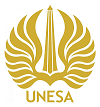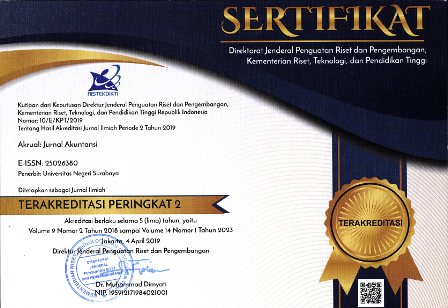Transparency of Hajj Fund Accountability: Performance of Financial Statements and Investment Optimization
DOI:
https://doi.org/10.26740/jaj.v14n1.p47-62Keywords:
Centralized Integration System, Public Accountability, Financial Report Performance, Board of Trustees, Optimization of Investment InstrumentsAbstract
This research aims to provide a theoretical framework for implementing financial products in the management of Hajj financial funds presented in a transparent and accountable manner with a novelty system that is centrally embedded in the field. This research contribution integrates the management of centralised system fund instruments that are transparent and accountable. This research method uses sampling in the form of interview instruments and questionnaires to 126 employees who work in religious affairs offices located in branch offices on the island of Java. As a result of this research, there is a significant positive effect of direct or indirect integrated systems centralised on transparency and public accountability in producing good financial statement performance, and financial statement performance relationships have a significant positive effect on the optimisation of financial instruments
References
Abernethy, M. A., Chua, W.-F. F., Grafton, J., & Mahama, H. (2007). Accounting and Control in Health Care: Behavioural, Organisational, Sociological and Critical Perspectives. Handbook of Management Accounting Research, 2(14), 805-829. https://dx.doi.org/10.1016/S1751-3243(06)02014-1
Addink, G. H. (2018). Good Governance: Importance in Practice, Theories and Definitions. Halu Oleo Law Review, 1(1), 1. https://doi.org/10.33561/holrev.v1i1.2347
Benos, E., Payne, R., & Vasios, M. (2020). Centralised trading, transparency, and interest rate swap market liquidity: Evidence from the implementation of the dodd-frank act. Journal of Financial and Quantitative Analysis, 55(1). https://doi.org/10.1017/S0022109018001527
Chapman, C. S., & Kihn, L. A. (2009). Information system integration, enabling control and performance. Accounting, Organisations and Society. https://doi.org/10.1016/j.aos.2008.07.003
Cheung, G. W., & Wang, C. (2017). Current Approaches for Assessing Convergent and Discriminant Validity with SEM: Issues and Solutions. Academy of Management Proceedings, 2017(1), 12706. https://doi.org/10.5465/AMBPP.2017.12706abstract
Damodaran, A. (2006). The Value of Transparency and the Cost of Complexity. SSRN Electronic Journal. https://doi.org/10.2139/ssrn.886836
Hair, J. F., Black, W. C., Babin, B. J., & Anderson, R. E. (2010). Multivariate data analysis: Global edition. Pearson Education Limited.
Ho, K. F., Ho, C. H., & Chung, M. H. (2019). Theoretical integration of user satisfaction and technology acceptance of the nursing process information system. PLoS ONE. https://doi.org/10.1371/journal.pone.0217622
Jeriansyah, W., & Mappanyukki, R. (2020). The Effect of Accountability and Transparency of Regional Financial Management on Local Government Performance. International Journal of Asian Social Science, 10(12). https://doi.org/10.18488/journal.1.2020.1012.721.729
Klagge, B., & Martin, R. (2005). Decentralised versus centralised financial systems: Is there a case for local capital markets? Journal of Economic Geography, 5(4). https://doi.org/10.1093/jeg/lbh071
Liang, X. (2011). Financial and economic analysis of centralised wastewater reuse systems and comparison between centralised and decentralised systems. In The Economics of Sustainable Urban Water Management: the Case of Beijing. https://doi.org/10.1201/b11528-4
Lisnawati. (2017). Optimalisasi Pengelolaan Dana Haji Melalui Investasi. Buletin APBN: Pusat Kajian Anggaran Badan Keahlian DPR RI, 2(17).
Nasution, D. A. D. (2018). Analisis Pengaruh Pengelolaan Keuangan Daerah, Akuntabilitas dan Transparansi terhadap Kinerja Keuangan Pemerintah. Jurnal Studi Akuntansi & Keuangan, 2(3).
Nunung, N., Magnaz, L., Sri, F., & Nurhayati. (2016). The influence of accounting information quality, accountability and transparency of financial reporting on the level of zakat revenue (Survey in Bazda West Java Province). International Journal in Management & Social Science, 4(4).
Ojeka, S. A., Mukoro, D. O., & Kanu, C. (2015). Does Financial Reporting Disclosures Enhance Firm Financial Performance in the Nigerian Manufacturing Companies? Mediterranean Journal of Social Sciences, 6(6), 332.
Primadhany, E. F. (2018). Tinjauan Terhadap Tanggung Jawab Badan Pengelola Keuangan Haji (Bpkh) Dalam Melakukan Penempatan Dan/Atau Investasi Keuangan Haji. JURISDICTIE, 8(2), 125. https://doi.org/10.18860/j.v8i2.4447
Puspitasari, R., Yadiati, W., Winarningsih, S., & Iriyadi. (2020). The influence of leader commitment on the quality of financial statements and its impact on the performance accountability of blud hospitals in West Java province. International Journal of Pharmaceutical Research, 12(4). https://doi.org/10.31838/ijpr/2020.12.04.491
Riyadi, S., & Santoso, C. B. (2018). The Influence of Board of Commissioners, Board of Directors, Board of Commissioners Independent Audit Committee and Board of Trustees to Financial Performance Islamic Banking (Case Study on Islamic Bank Period in 2011-2013). Archives of Business Research, 6(5). https://doi.org/10.14738/abr.65.4568
Roswinna, W., & Priatna, D. K. (2020). The model of financial report quality (an empirical study of financial report statement in West Java Province). In Advances in Business, Management and Entrepreneurship. https://doi.org/10.1201/9781003131465-12
Siswadi, Y., Houghty, G. S., & Agustina, T. (2020). Implementation of the CIPP evaluation model in Indonesian nursing schools. Jurnal Ners, 14(3), 126. https://doi.org/10.20473/jn.v14i3.17046
Stufflebeam, D. L. (2003). The CIPP Model for Evaluation. In International Handbook of Educational Evaluation. https://doi.org/10.1007/978-94-010-0309-4_4
Suhaimi Nahar, H., & Yaacob, H. (2011). Accountability in the sacred context: The case of management, accounting and reporting of a Malaysian cash awqaf institution. Journal of Islamic Accounting and Business Research. https://doi.org/10.1108/17590811111170520
Sulaiman, S., Nizam, A., Farid, F., Kesuma, T. M., Madjid, I., & Siregar, R. (2019). The Role of Good Government Governance Principles in Enhancing the Performance of Public Organization in Aceh, Indonesia. Proceedings of the 1st Aceh Global Conference (AGC 2018). https://doi.org/10.2991/agc-18.2019.110
Sundjaja, R. S., & Barlian, I. (2001). Manajemen Keuangan (Edisi Kedu). PT Prehallindo.
Tahir, A. (2011). Kebijakan Publik dan Transparansi Penyelenggaraan Pemerintahan Daerah.
Thohari, A. H., Suhardi, S., Kurniawan, N. B., & Yustianto, P. (2017). Rekayasa Sistem Keterbukaan Data Pemerintah untuk Mendukung Transparansi dan Partisipasi Pemerintah Daerah. Jurnal Nasional Teknik Elektro Dan Teknologi Informasi (JNTETI), 6(3). https://doi.org/10.22146/jnteti.v6i3.325
Ulfenborg, B. (2019). Vertical and horizontal integration of multi-omics data with miodin. BMC Bioinformatics, 20(1), 649. https://doi.org/10.1186/s12859-019-3224-4
Wangler, B., & Paheerathan, S. J. (2000). Horizontal and vertical integration of organisational IT systems. Information Systems Engineering, September, 12.
Downloads
Published
How to Cite
Issue
Section
License
Copyright (c) 2021 AKRUAL: Jurnal Akuntansi

This work is licensed under a Creative Commons Attribution-NonCommercial 4.0 International License.
 Abstract views: 801
,
Abstract views: 801
, PDF Downloads: 916
PDF Downloads: 916


















